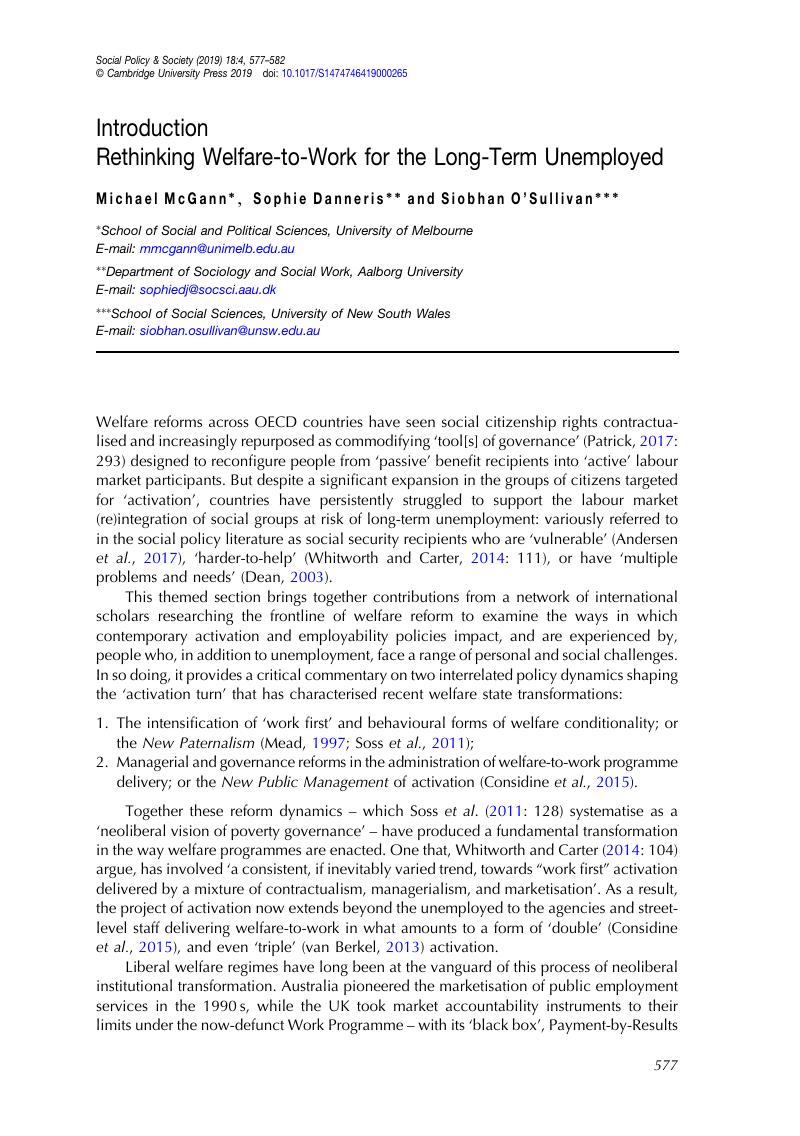Crossref Citations
This article has been cited by the following publications. This list is generated based on data provided by Crossref.
Johnston, Helen
and
McGauran, Anne-Marie
2021.
Moving towards a more tailored Public Employment Service?.
Administration,
Vol. 69,
Issue. 2,
p.
107.
Casey, Simone
2022.
"Job seeker" experiences of punitive activation in Job Services Australia.
Australian Journal of Social Issues,
Vol. 57,
Issue. 4,
p.
847.
Ng, Irene Y. H.
Tan, Jian Qi
Mathew, Mathews
Ho, Kong Weng
and
Ting, Yi Ting
2023.
The Importance of Considering Debt and Young Children in Activation: A Survival Analysis of Return to Welfare.
Social Policy and Society,
Vol. 22,
Issue. 2,
p.
299.
Skjold, Suzan Mbatudde
and
Lundberg, Kjetil Grimastad
2024.
Accountability in personalised Supported Employment-based activation services.
Journal of Social Policy,
Vol. 53,
Issue. 4,
p.
916.
Casey, Simone
2025.
Robo‐compliance in Australian employment services.
Australian Journal of Social Issues,
Vol. 60,
Issue. 2,
p.
428.
Vellinga‐Dings, Amber
Steverink, Nardi
and
Bilecen, Başak
2025.
Towards tailored social work interventions for long‐term social assistance recipients in the Netherlands: Identifying their challenges and needs.
International Journal of Social Welfare,
Vol. 34,
Issue. 4,


